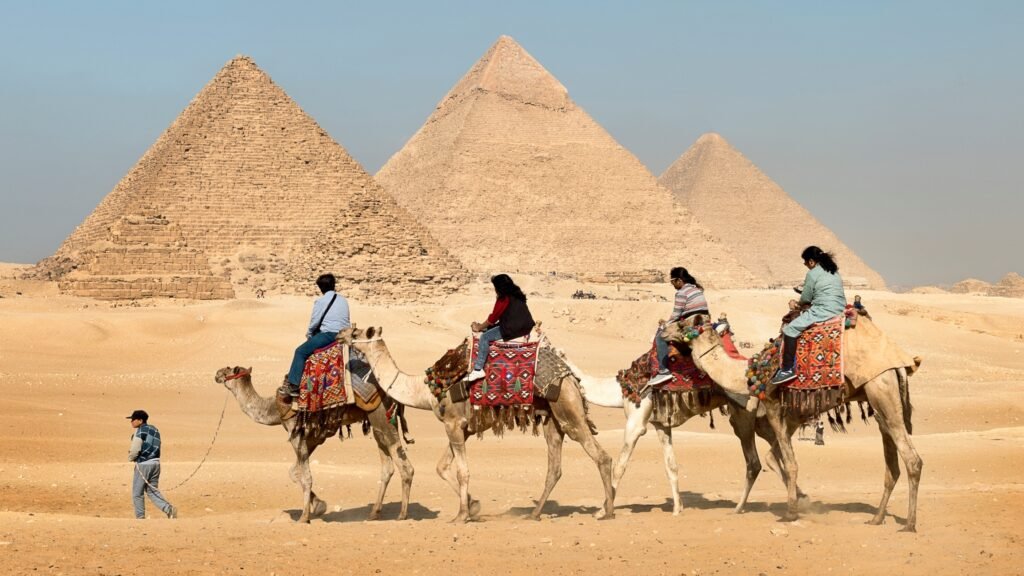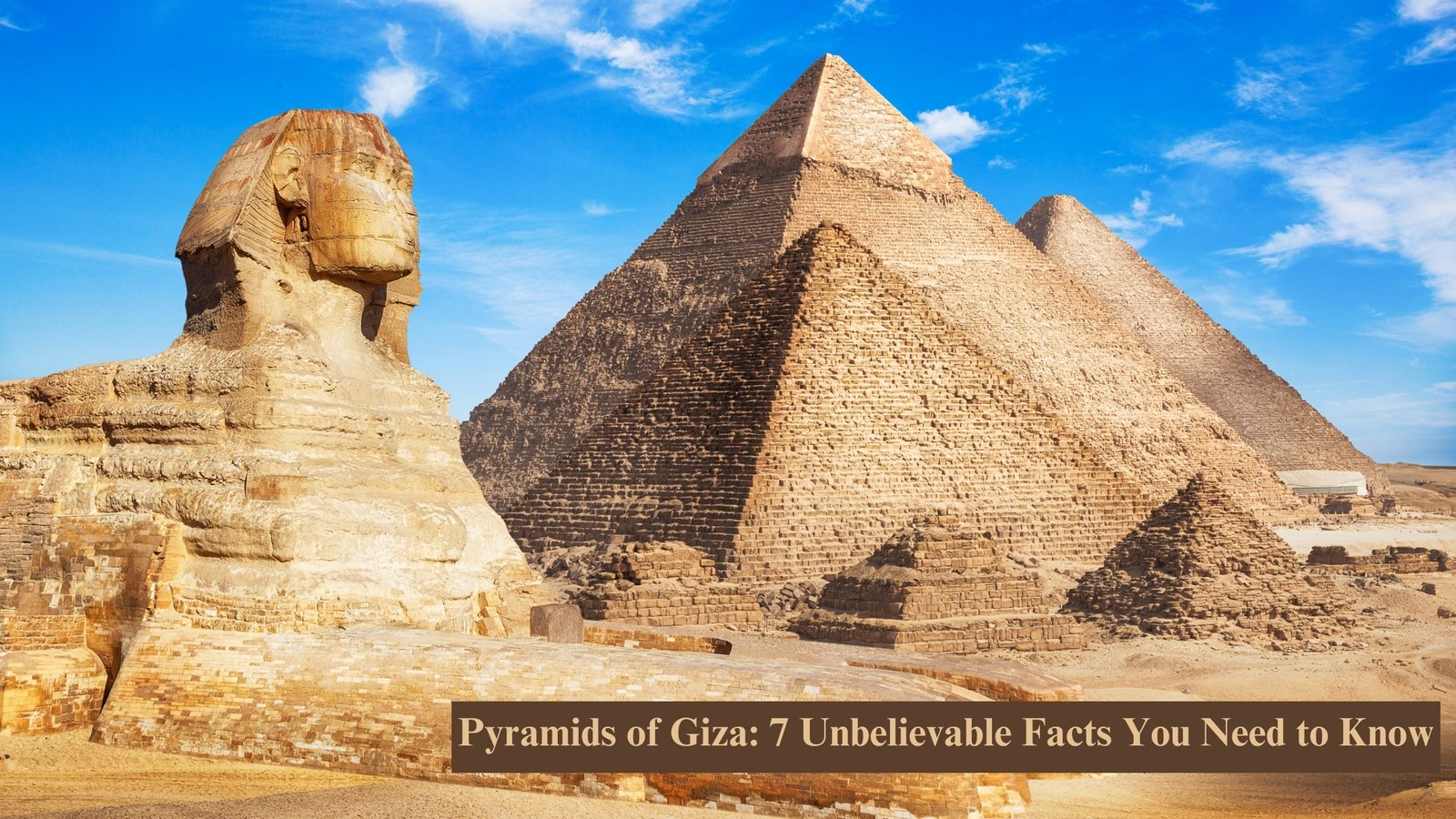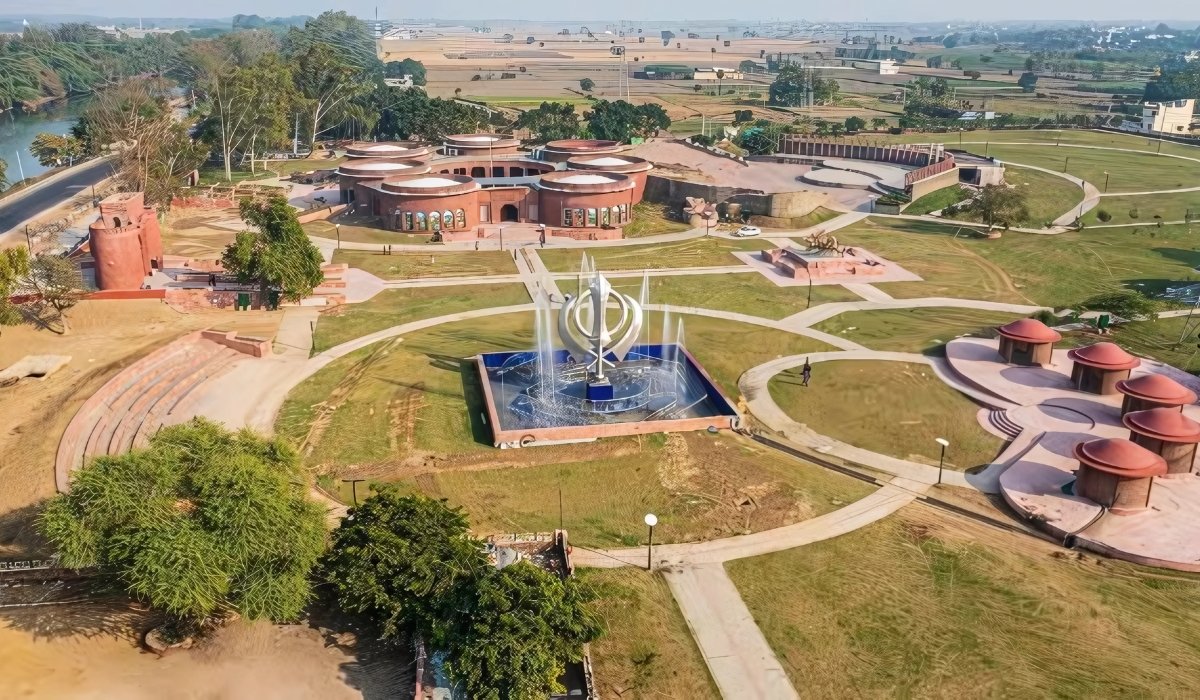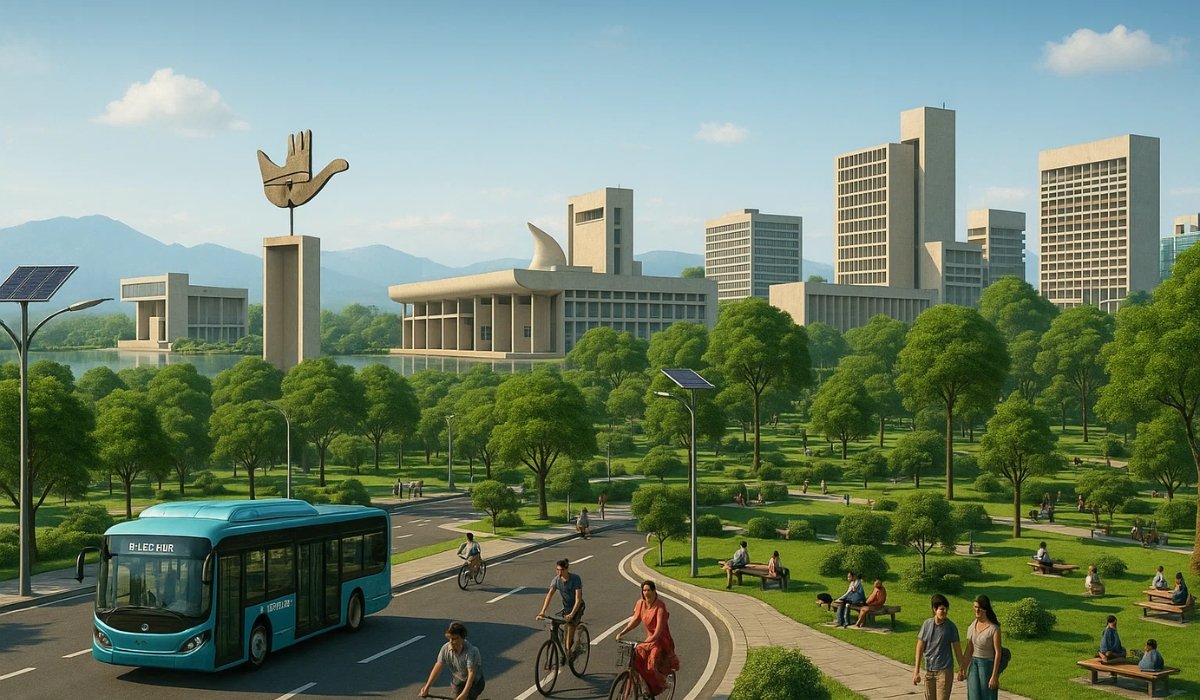The Mystery and Majesty of the Pyramids of Giza
The Pyramids of Giza stand as a monumental testament to ancient Egyptian engineering, mystery, and culture. These awe-inspiring structures continue to captivate millions of visitors worldwide, and their origins still baffle historians and archaeologists.
The giza pyramids, constructed over 4,500 years ago, have long been symbols of human achievement. In this article, we explore the Pyramids of Giza, uncovering secrets, offering fascinating facts, and examining their historical and spiritual significance.

1. The Pyramids of Giza: A Quick Overview
The Pyramids of Giza are not just a group of ancient tombs; they are an embodiment of Egyptian ingenuity and a symbol of an ancient civilization’s grandeur. These three pyramids — the Great Pyramid of Khufu, the Pyramid of Khafre, and the Pyramid of Menkaure — are located on the Giza Plateau, near Cairo, Egypt.
Here’s a quick look at the core features:
| Feature | Description |
|---|---|
| Main Pyramids | Great Pyramid of Khufu, Pyramid of Khafre, Pyramid of Menkaure |
| Location | Giza Plateau, Egypt |
| Construction Period | Around 2600–2500 BC |
| Material Used | Limestone, granite, mortar |
| Purpose | Tombs for Pharaohs |
| Alignment | Almost perfect alignment with the cardinal points |
2. The Great Pyramid of Giza: A Marvel of Engineering
The Great Pyramid of Giza, also known as the Pyramid of Khufu, is the largest and most well-known of the three pyramids.
At the time of its completion, it stood at 146.6 meters (481 feet) tall. This pyramid remained the tallest man-made structure for over 3,800 years!
Incredible Dimensions and Construction:
- Base Length: 230.4 meters (756 feet) on each side
- Number of Blocks: Over 2.3 million stone blocks
- Average Block Weight: 2.5 to 15 tons each
- Construction Time: Estimated 20 years
Its sheer size and precision make it an extraordinary feat of ancient engineering. It is a critical aspect of the giza pyramids, representing the peak of Egypt’s architectural prowess.
3. The Purpose Behind the Pyramids of Giza
The Pyramids of Giza were primarily constructed as tombs for Pharaohs and are deeply tied to the Egyptians’ beliefs about the afterlife.
These monumental structures were designed to ensure the Pharaoh’s safe journey into the afterlife, where he would join the gods.
Key Functions of the Pyramids:
- Pharaohs as Divine Figures: Egyptians believed their pharaohs were gods on Earth. The pyramids were their final resting places, serving as a bridge to immortality.
- Symbolism of the Sun: The pyramid’s shape was intended to represent the sun’s rays, with the Pharaoh’s soul ascending to the heavens upon death.
- Funerary Complexes: The pyramids were part of a larger complex, which included temples and other structures for rituals and ceremonies.
4. The Construction Mystery of the Pyramids of Giza
One of the biggest mysteries surrounding the Pyramids of Giza is how they were built with such precision, given the primitive tools available at the time. Several theories have been proposed, but none have been conclusively proven.
Most Popular Construction Theories:
- Ramp Theory: Ancient Egyptians might have used straight or zigzagging ramps to transport stones to the construction site.
- Internal Spiral Ramp: A more recent theory suggests the use of a spiral ramp inside the pyramid itself, enabling workers to move stones as they built upwards.
- Water Lubrication: Some suggest water was used to reduce friction and make the process of moving heavy stones more manageable.
Although no single theory has been universally accepted, these possibilities showcase the extraordinary ingenuity of the ancient Egyptians.

5. Hidden Secrets and Fascinating Facts About the Pyramids of Giza
The giza pyramids are filled with astonishing facts that continue to amaze scholars and tourists alike.
Noteworthy Facts:
- Astronomical Alignment: The pyramids are aligned almost perfectly with the cardinal points — north, south, east, and west.
- Engineering Precision: The Great Pyramid’s base is level to within less than an inch (2.5 cm).
- Labor Force: Contrary to popular belief, the pyramids were built by a skilled workforce, not slaves. These workers were housed in nearby villages and were well-fed for their labor.
- The Great Sphinx: Situated near the pyramids, the Great Sphinx of Giza is another iconic structure, believed to represent Pharaoh Khafre.
6. Myths and Mysteries Surrounding the Pyramids of Giza
The Pyramids of Giza have been the subject of countless myths and speculative theories. Some of the most intriguing myths include:
Popular Myths and Theories:
- Alien Involvement: Some claim that the pyramids were built by extraterrestrial beings due to the sheer scale of the structures and the precision of their construction.
- Cursed Tombs: Ancient Egyptian tombs, including the pyramids, were thought to be cursed, with many believing that disturbing the pharaohs’ tombs would bring misfortune or death.
- Hidden Knowledge: It is often suggested that the pyramids encode hidden scientific knowledge, ancient wisdom, or even cosmic knowledge.
These myths continue to spark fascination but remain unproven in scientific circles.
7. Visiting the Pyramids of Giza: Essential Information for Tourists
If you’re planning a visit to the giza pyramidsa, here’s what you need to know:
Key Visitor Information:
- Best Time to Visit: October to April (cooler temperatures)
- Opening Hours: 8 AM to 5 PM (typically, check before traveling)
- What to See: The Great Pyramid, the Sphinx, the Solar Boat Museum, and the smaller pyramids
- Tours: Guided tours are highly recommended to fully appreciate the historical context.
Top Tip for Visiting:
Arrive early to avoid the large crowds and the intense afternoon heat.
Frequently Asked Questions (FAQ) about the Pyramids of Giza
1. How old are the Pyramids of Giza?
The Pyramids of Giza were constructed over 4,500 years ago, around 2600–2500 BC during Egypt’s Fourth Dynasty.
2. Can you go inside the Pyramids of Giza?
Yes, visitors can enter the Great Pyramid of Khufu and others, although it requires an additional ticket. Be prepared for steep and narrow passageways.
3. Who built the Pyramids of Giza?
The pyramids were built by skilled laborers, not slaves, who worked under the guidance of Pharaohs. These workers were well-fed and housed in nearby villages.
4. What is the purpose of the giza pyramids?
The pyramids served as royal tombs for the Pharaohs, ensuring their safe journey to the afterlife and symbolizing their divine power.
5. Are there still hidden chambers in the giza pyramids?
Yes, advanced scanning technology has recently uncovered hidden chambers and voids within the Great Pyramid and other pyramids.

Related Insights (People Also Search For)
- Ancient Egyptian Architecture
- The Great Sphinx of Giza
- The Secrets of the Nile River
- Pharaohs and their Tombs
- Egyptian Culture and Religion
Conclusion: The Enduring Legacy of the Pyramids of Giza
The Pyramids of Giza are not just architectural feats; they are powerful symbols of Egypt’s greatness, mystery, and spiritual beliefs. These monuments have withstood the test of time and continue to inspire awe and admiration.
The stories, myths, and mysteries surrounding them make them timeless wonders, attracting visitors and scholars alike. The Pyramids of Giza remind us that even in the face of uncertainty, human ambition can create something truly extraordinary.
If you’re passionate about history and want to dive deeper into the wonders of the world, explore more fascinating historical stories and insights by visiting our History Section!












